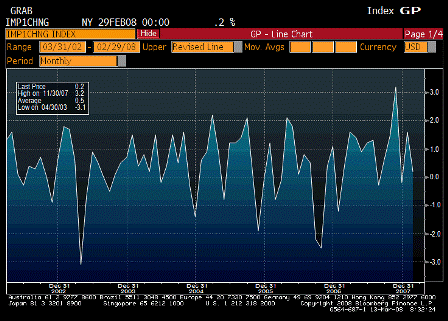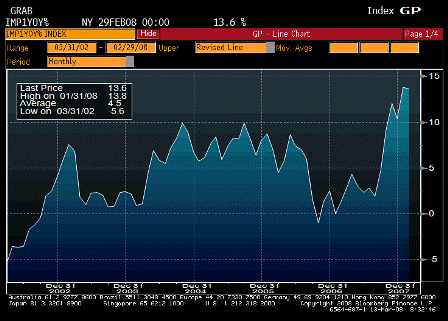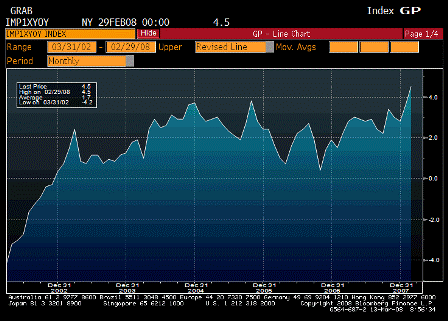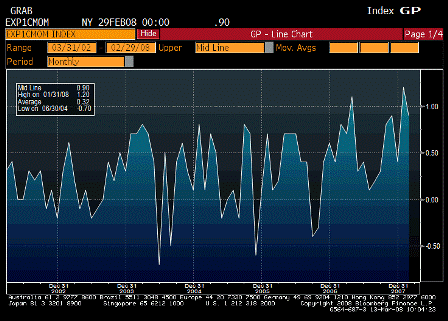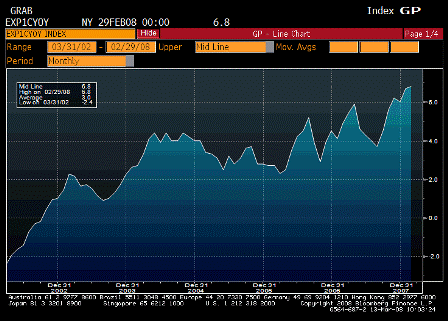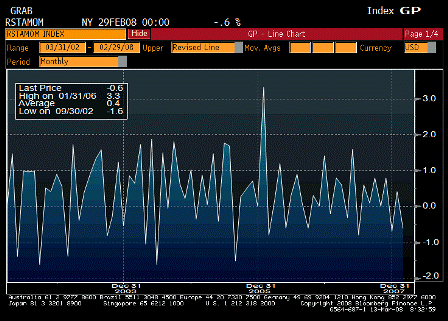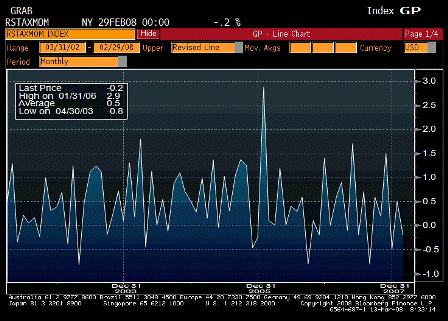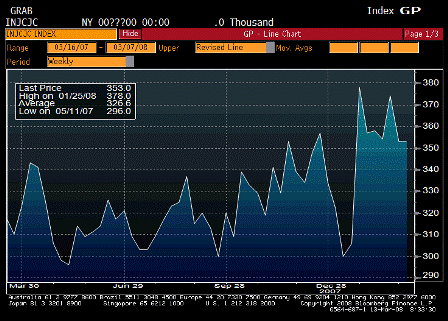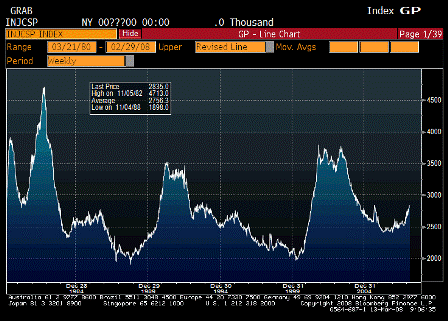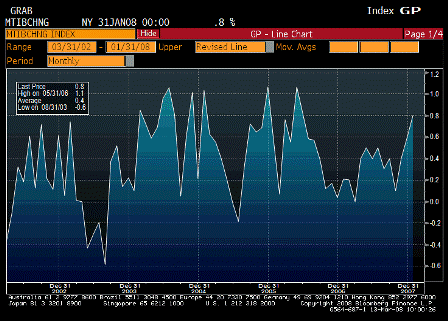Note the negative initial spin on inventories versus the falling stock sales ratio at the end.
Business inventories, sales up in January
by Lisa Lambert
WASHINGTON (Reuters) – U.S. business inventories rose by a larger-than-expected 0.8 percent in January, the biggest gain since 2006, while sales experienced their largest increase in nearly a year, a government report showed on Thursday.
Inventories exceeded Wall Street’s expectations of a 0.5 percent gain, and stood at a seasonally adjusted $1.46 trillion the Commerce Department said. The January gain was the biggest since June 2006, when inventories also rose 0.8 percent.
January business sales rose 1.5 percent to $1.16 trillion, the biggest gain since 1.6 percent in March 2007.
The stock-to-sales ratio, which measures how long it would take to empty inventories at the current pace, dropped to 1.25 months’ worth from 1.26 months’ in December. It matched the record low set in November.
The department also reported that retail inventories rose 0.4 percent in January, after remaining unchanged in December, to $507.73 billion. Sales that month increased 0.5 percent to $343.94 billion.

